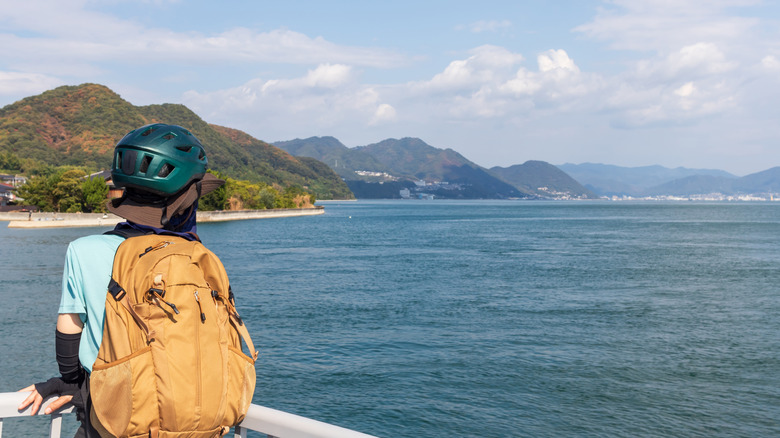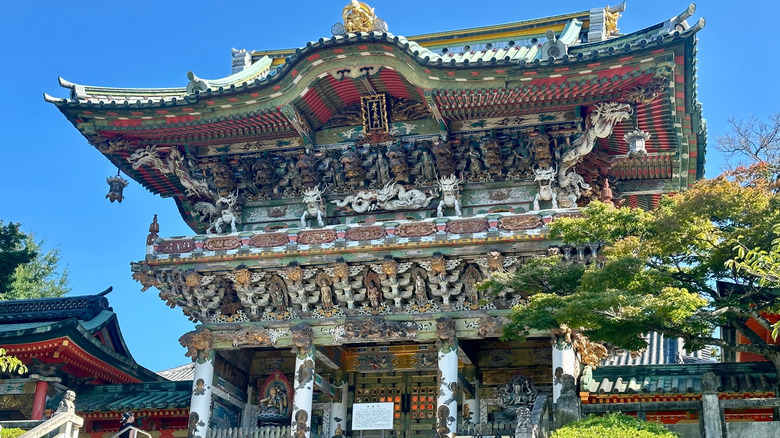Japan's Biggest Production Of Lemons Is On A Citrusy Island Paradise With Sweet-Scented Mediterranean Vibes
Imagine this: sea breeze blowing through your hair, the scent of citrus mixed with salt air tingling your nose, the sound of whirring bicycle spokes audible from beneath you, and through the leaves of a lemon grove to your left, dotted in flecks of sunshine-yellow fruit, you see the bright Seto Inland Sea glimmering blue. Coasting down into Ikuchijima, aka Lemon Island, you see a charming cafe serving local treats like lemon sorbet or lemon cake. You park and order a lemon pork dumpling, basking in the view.
There are a number of breathtaking trails that bikers should visit around the world, and Japan's Shimanami Kaido is a hidden gem. A gorgeous bike route of about 70 kilometers connecting larger islands Honshu and Shikoku, it crosses through six small islands including Ikuchijima, in Hiroshima Prefecture. Famously known as Lemon Island for its prevalence of lemon groves, Ikuchi Island — Ikuchijima in Japanese – along with Takaneshima Island produces around half of Hiroshima's lemon crops, which is notable since Hiroshima Prefecture accounts for 60% of all Japan's lemons. While lemons are typically associated with Mediterranean countries like Italy and Spain, or even California in the U.S., Ikuchijima has the perfect mild marine climate for growing citrus, and much of the approximately 20 sq. mile-island has embraced the fruit, as well as the cycling culture offered by the trail.
Serious bikers may choose to bike the full Shimanami Kaido route (approximately four hours non stop) and take a break at Lemon Island. You can also choose to cycle from Onomichi, ride until Ikuchijima, then get a ferry back to Onomichi from there, saving you about 35 kilometers. Regardless, renting a bike to spend the day on Lemon Island is the perfect way to experience another side of Japan, and it's easy for any level of cyclist, particularly since electric bike rentals are now readily available to rent.
Cycling is a great way to see Ikuchijima
Cycling Ikuchijima is a great way to see gorgeous parts of Japan other than Tokyo, and is a wonderful jumping-off point from Hiroshima. From Tokyo, take a 4-hour bullet train to Hiroshima for under $250. Hop on the train from Hiroshima to Mihara, then catch the 40-minute ferry to Ikuchijima's Port Setoda or to Omishima Island where you can rent a bike and coast over the Tatara Ohashi Bridge, once the largest of its kind. Whether you cycle the 70 kilometer loop — Innoshima, Ikuchijima, Omishima, Hakatajima, and Oshima, finishing it up in Imabari — or just spent a leisurely day touring the paved bike path on Lemon Island, you'll have a great adventure. Ikuchijima itself is pretty flat, with about a 1 kilometer or 3% incline in some areas.
There are a number of places where you can rent bikes on and around Ikuchijima. Shimanami Japan has multiple shops along the route so that you don't even have to return them to the same spot you rented from. Costs start at about 2,000 yen or $14 per day for a standard bicycle. You can also rent bikes near Sedota Port.
Once you're saddled up, follow the blue line,which separates cars from bike lanes. Sunset Beach is a great place to start your ride, and you'll pass it soon after you exit the Tatara Ohashi bridge. It's white and sandy with calm water, and if you suddenly decide you want a more leisurely experience than biking, you can swim or rent kayaks and spend extra time here. Along the path, an Island Art Museum has installed more than a dozen contemporary art pieces that feature many local artists. Of course, there are also plenty of lemon trees en route!
Cycle through Ikuchijima and stay a little longer
There's plenty to do on Ikuchijima, which makes utilizing bike stops so fun; there are many cafes, restaurants, and photo op stops to try along the way, and even a downtown "shotengai," an old-style street with shops. These all make Lemon Island a quaint and delicious day trip even if you don't bike it. Of course, Lemon Valley itself is a big draw. You can also stop at the Hirayama Museum to check out more local art. You'll pass the artistic Kosanji Temple, described as a "Buddhist theme park," designed by a businessman as a tribute to his mother, complete with marble imported from Italy.
Because the popularity of cycling has grown, Ikuchijima is investing in more infrastructure for not only its residents but also tourists, many of whom travel here to cycle. If you want to spend more time on the island, consider staying at Azumi Setoda, a charming, high-end, old-style ryokan once owned by a family involved in salt shipping in the 19th century. SOIL Setoda is also a ryokan that hosts workshops for tourists interested in learning more about the lemon cultivation in this area. You can also stay at Yubune, a guest house with rooms and a community bath house that features pools and saunas. Or try Suminoe Ryokan, which has ocean-facing rooms for just 12,000 yen per person, about $85 per night, as of this writing.
The best time of year to visit Japan depends on what you want to experience while you're visiting, and when it comes to Lemon Island, December through April is the best time to go to see (and smell!) yellow lemons. They'll be ripe at that time, and winter months, though they'll have cooler temps, may be better for cycling.


